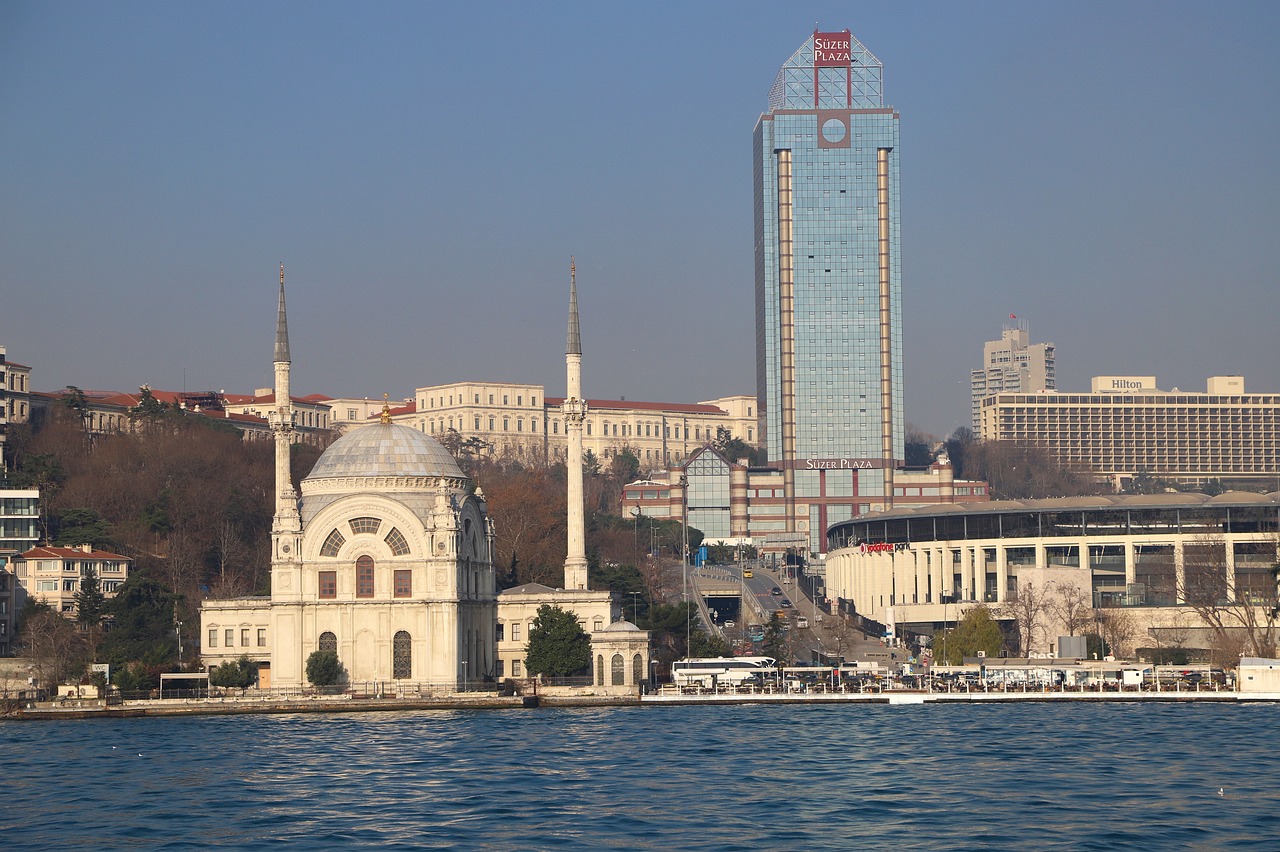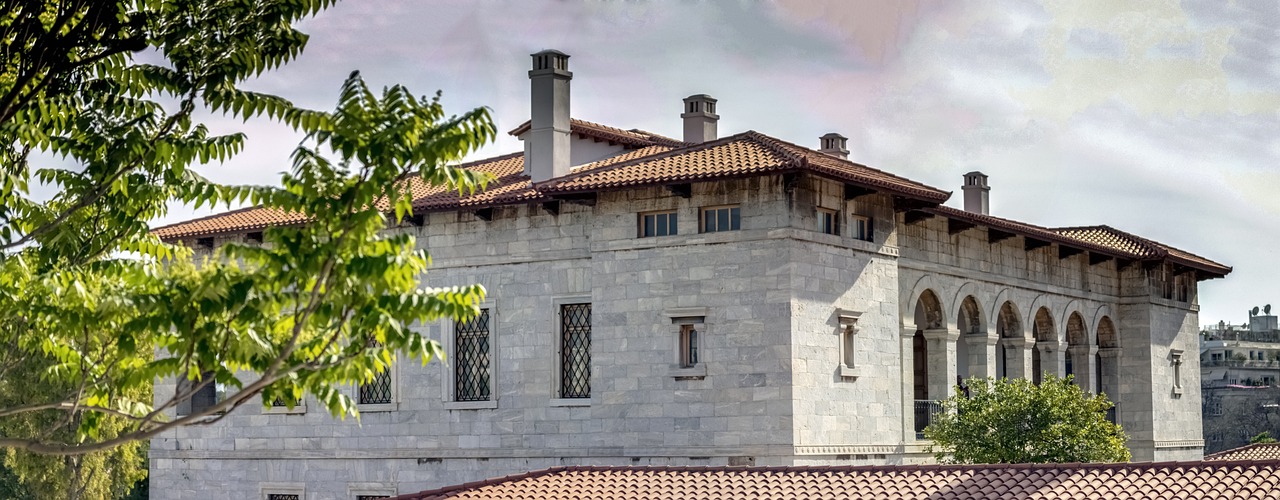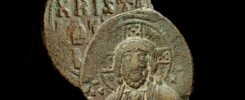Step back in time and immerse yourself in the enchanting streets of ancient Constantinople, a city steeped in history and allure. As you wander through the bustling thoroughfares, you’ll be greeted by a tapestry of sights and sounds that tell the tales of a bygone era. Imagine the echoes of chariots racing through the streets, the whispers of traders haggling in the markets, and the laughter of children playing in the shadow of grand monuments.
Each cobblestone pathway holds secrets waiting to be unveiled, each alleyway beckons with the promise of discovery. From the majestic Hagia Sophia standing tall against the skyline to the remnants of the ancient city walls that once stood as formidable sentinels, every corner holds a piece of the city’s rich past.
Picture yourself strolling through the vibrant neighborhoods, where artisans ply their trade, storytellers spin their tales, and the aroma of exotic spices fills the air. The city pulses with life, a mosaic of cultures and traditions woven together in a vibrant tapestry.
As you meander through the streets, you’ll encounter relics of a bygone era, from ornate fountains that once quenched the thirst of weary travelers to grand palaces that housed emperors and dignitaries. Each building, each monument, whispers a story of triumph and tragedy, of glory and downfall.
Take a moment to pause and soak in the atmosphere, to let the spirit of ancient Constantinople wash over you. Feel the weight of history in every stone, hear the echoes of the past in every gust of wind. In this city where empires rose and fell, where cultures collided and merged, you’ll find yourself transported to a world unlike any other.
The Walls of Constantinople
When it comes to the ancient city of Constantinople, one cannot overlook the magnificence and strategic significance of its formidable walls. These imposing fortifications stood as a symbol of strength and resilience, protecting the city from countless invasions throughout its history. The Walls of Constantinople were not merely barriers; they were engineering marvels that showcased the ingenuity and foresight of the Byzantine Empire.
Constructed to withstand the test of time and the onslaught of enemies, these walls spanned over miles, encompassing the city in a protective embrace. The intricate design and sheer scale of the fortifications were a testament to the importance placed on defense in a city that served as the heart of a vast empire.
Walking along the remnants of these ancient walls today, one can’t help but be awestruck by the sheer magnitude of the structures and the stories they hold within their stones. From massive gates to imposing towers, each element of the fortifications served a crucial role in safeguarding Constantinople from external threats.
Imagine standing atop these walls, gazing out over the city and beyond, feeling the weight of history pressing down upon you. The Walls of Constantinople not only protected the physical city but also embodied the spirit of its people – resilient, determined, and unwavering in the face of adversity.
For tourists seeking to immerse themselves in the rich history of Constantinople, a visit to these ancient walls is a must. Explore the intricate details of the fortifications, marvel at the strategic genius behind their construction, and envision the countless battles fought to defend this great city. The Walls of Constantinople stand as silent sentinels, whispering tales of triumph and tragedy to all who care to listen.

Hagia Sophia: The Jewel of Constantinople
When it comes to exploring the rich history of ancient Constantinople, one cannot overlook the magnificent Hagia Sophia. This iconic structure, known as the Jewel of Constantinople, stands as a testament to the city’s cultural and architectural significance. Originally built as a cathedral in the 6th century, Hagia Sophia later transformed into a mosque and now serves as a museum, showcasing a blend of Byzantine and Ottoman influences.
Stepping inside Hagia Sophia is like stepping back in time, surrounded by towering columns, intricate mosaics, and breathtaking domes that soar high above. The interior of this historic marvel exudes a sense of grandeur and spirituality, inviting visitors to marvel at its beauty and craftsmanship.
One of the most striking features of Hagia Sophia is its massive dome, which was an engineering marvel of its time. The intricate designs and architectural details found throughout the structure reflect the artistic and cultural fusion that defined the city of Constantinople.
Visitors to Hagia Sophia can also witness the layers of history that have shaped this iconic building. From the Christian mosaics that once adorned its walls to the Islamic calligraphy added during its time as a mosque, each element tells a story of the city’s diverse past and the empires that left their mark on its architecture.
For tourists seeking to immerse themselves in the history and beauty of ancient Constantinople, a visit to Hagia Sophia is a must. It offers a glimpse into the rich tapestry of cultures that once thrived in this vibrant city, making it a true jewel of both the past and the present.
The Hippodrome of Constantinople
Step into the ancient Hippodrome of Constantinople, a must-visit site for tourists seeking to immerse themselves in the vibrant history of this magnificent city. The Hippodrome, once a bustling chariot racing stadium, was not just a venue for thrilling races but also the heart of Constantinople’s social and political life. Imagine the cheers of the crowd, the thundering hooves of the horses, and the grandeur of the events that unfolded within these historic grounds.
As you walk through the remnants of the Hippodrome, you can almost feel the echoes of the past reverberating through the air. Picture the majestic Obelisk of Theodosius, a towering ancient monument that once stood as a symbol of imperial power and prestige. Marvel at the Serpent Column, an intriguing bronze sculpture with a fascinating history dating back to ancient Greece.
Take a moment to sit by the German Fountain, a beautiful structure gifted to the Ottoman Empire by Kaiser Wilhelm II. Let the intricate details of the fountain transport you back in time, where the sounds of flowing water mingled with the chatter of locals and visitors alike.
Explore the Hippodrome’s surroundings and discover the remnants of the imperial palaces and grand structures that once lined its perimeter. Imagine the chariots racing around the spina, the central barrier of the arena, as the crowds cheered on their favorite teams and factions.
Engage with the history of the Hippodrome through guided tours that offer insights into the daily life and cultural significance of this ancient site. Learn about the political gatherings, religious ceremonies, and public spectacles that took place within these hallowed grounds, shaping the identity of Constantinople through the ages.

Byzantine Culture and Daily Life
When exploring the Byzantine culture and daily life of ancient Constantinople, visitors are immersed in a world filled with vibrant markets, religious practices, artistic achievements, and intellectual pursuits. The bustling markets of Constantinople were a melting pot of goods and cultures, where merchants from far and wide traded their wares, creating a lively and diverse atmosphere.
The city’s religious practices were deeply ingrained in daily life, with magnificent churches and monasteries dotting the landscape. The Hagia Sophia, with its awe-inspiring domes and intricate mosaics, stood as a testament to the Byzantine Empire’s religious devotion and architectural prowess.
Artistic achievements flourished in Constantinople, with skilled artisans creating breathtaking works of art in various mediums. From intricate ivory carvings to vibrant frescoes, the city was a hub of creativity and innovation.
Intellectual pursuits thrived in the city’s libraries and schools, where scholars delved into philosophy, science, and literature. The Byzantines were known for their love of learning and their preservation of ancient texts, ensuring that knowledge was passed down through the generations.
The traditions and customs of Byzantine daily life were rich and varied, with elaborate ceremonies and rituals marking important events. From lavish banquets to solemn religious processions, every aspect of life in Constantinople was steeped in tradition and meaning.
Visitors to modern-day Istanbul can still catch glimpses of this vibrant past, with remnants of Byzantine culture scattered throughout the city. From the grand architecture of the city’s historic buildings to the bustling bazaars filled with exotic goods, the spirit of ancient Constantinople lives on in the streets of its modern counterpart.
Frequently Asked Questions
- What is the best time to visit ancient Constantinople?
The best time to visit ancient Constantinople, now Istanbul, is during the spring and fall seasons when the weather is mild and pleasant, allowing for comfortable exploration of the historical sites.
- Are there guided tours available for exploring ancient Constantinople?
Yes, there are numerous guided tours available that offer insightful journeys through the streets of ancient Constantinople, providing in-depth knowledge about the history, architecture, and culture of the once great city.
- What are some must-see attractions in ancient Constantinople?
Some must-see attractions in ancient Constantinople include the Walls of Constantinople, Hagia Sophia, the Hippodrome, and various museums showcasing artifacts from the Byzantine era.
- Is it safe to travel to modern-day Istanbul?
Modern-day Istanbul is generally safe for tourists, but like any other major city, it is advisable to practice caution and be aware of your surroundings while exploring the streets and historical sites.
- How can I learn more about the history of ancient Constantinople?
To delve deeper into the history of ancient Constantinople, you can visit historical sites, museums, and libraries, or engage in guided tours and educational programs that focus on the rich heritage of the city.


